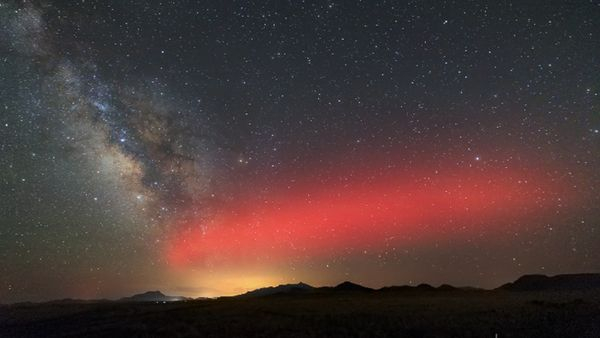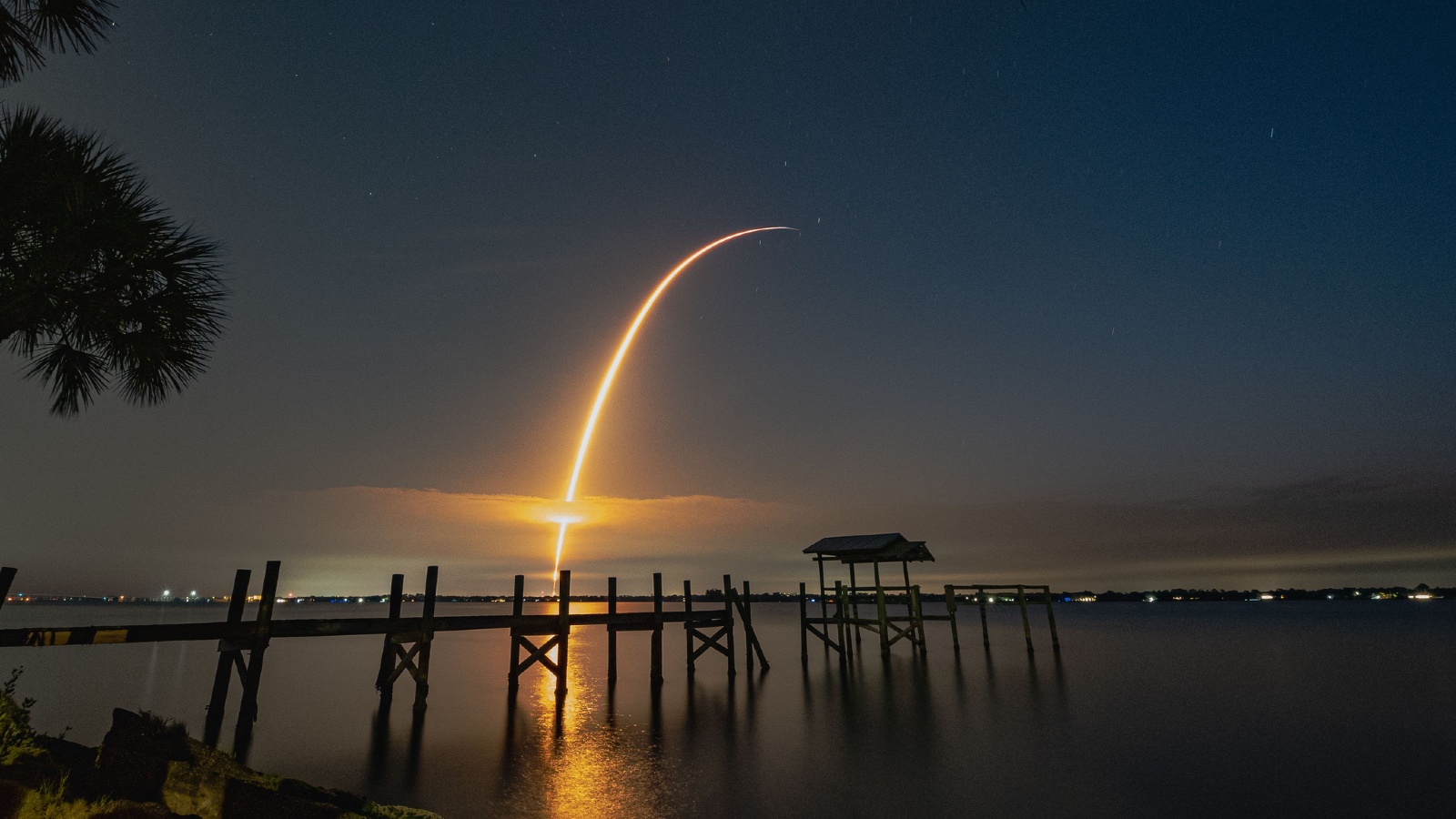SpaceX rockets keep tearing blood-red 'atmospheric holes' in the sky, and scientists are concerned
Astronomers have discovered a new type of "aurora" created by falling SpaceX rocket boosters that punch temporary holes in the ionosphere.

De-orbiting SpaceX rockets are smashing temporary holes in the upper atmosphere, creating bright blobs of light in the sky. Now, scientists have warned that these "SpaceX auroras," which look like glowing red orbs of light, could be causing unrecognized problems — though they are not a threat to the environment or life on Earth.
Researchers have known for decades that launching rockets into space can punch holes in the upper ionosphere — the part of the atmosphere between 50 and 400 miles (80 and 644 kilometers) above Earth's surface where gas is ionized, or stripped of electrons. These "ionospheric holes" can excite gas molecules in this part of the atmosphere and trigger vibrant streaks of red, aurora-like light.
For example, in July, a SpaceX Falcon 9 rocket, which was carrying Starlink satellites into orbit, ripped open a hole above Arizona that made the sky bleed. And, in September, a U.S. Space Force rocket accidentally punched an ionospheric hole above California, which created a faint red glow.
Now, astronomers at the McDonald Observatory in Texas have spotted similar but unique red lights appearing long after SpaceX's Falcon 9 rockets have left Earth's atmosphere. These lights, which are smaller and more spherical than the long streaks created by launching rockets, are the result of ionospheric holes carved out by the rockets' secondary boosters as they fall back to Earth after detaching from the rockets, Spaceweather.com reported.
Astronomers spotted the first of these SpaceX auroras above the observatory in February, and now are seeing "2 to 5 of them each month," Stephen Hummel, an astronomer and outreach program coordinator at McDonald Observatory, told Spaceweather.com. The red orbs are "very bright" and "easily visible with the naked eye," he added.
Ascending rockets and de-orbiting boosters both trigger ionospheric holes by releasing fuel into the ionosphere, which causes ionized oxygen atoms to recombine, or turn back into regular gas molecules.
Get the Space.com Newsletter
Breaking space news, the latest updates on rocket launches, skywatching events and more!
This transformation excites the molecules and causes them to release red light, similar to when the gas is excited by solar radiation during traditional auroral displays. This essentially creates a hole in the surrounding plasma, or ionized gas. But the recombined molecules are are reionized, which closes up the holes within 10 to 20 minutes.
SpaceX's de-orbiting boosters release fuel during short burns in order to maneuver the falling debris to touch down in the southern Atlantic Ocean instead of crashing onto land. The resulting holes typically form above the south-central U.S. around 90 minutes after launch at an altitude of about 185 miles (300 km), according to Spaceweather.com. These holes are smaller and more circular than the holes torn open by launching rockets, so the resulting lights are more spherical and do not linger as long. But they are appearing more frequently.
Just like the larger light shows, the ionospheric holes pose no danger to life on Earth's surface. However, "their impact on astronomical science is still being evaluated," Hummel said. As a result, it is "a growing area of attention" among researchers, he added.

Changes to the ionosphere can also disrupt shortwave radio communication and interfere with GPS signals, according to Spaceweather.com.
Studying these holes could also help scientists learn more about the ionosphere.
"The ionospheric density is different night to night, so we can learn something about the efficiency of the [ionosphere's] chemistry by observing many events," Jeffrey Baumgardner, a physicist at Boston University, told Spaceweather.com.
The red blobs are not the only light shows created by SpaceX rockets. The company's rocket boosters spin and dump their leftover fuel in space before they de-orbit, which creates a cloud of tiny ice crystals. These crystals can occasionally reflect sunlight back toward Earth, and the illuminated fuel creates bright spirals in the night sky, known as "SpaceX spirals."
There have already been two major SpaceX spirals this year: The first was in January, which was spotted forming above Mauna Kea in Hawaii, and the second occurred in April, which shone during a traditional auroral display in Alaska.
The number of SpaceX launches is rapidly increasing so the auroras and spirals are both likely to become more common in the future.
Join our Space Forums to keep talking space on the latest missions, night sky and more! And if you have a news tip, correction or comment, let us know at: community@space.com.

Harry is a U.K.-based staff writer at Live Science. He studied Marine Biology at the University of Exeter (Penryn campus) and after graduating started his own blog site "Marine Madness," which he continues to run with other ocean enthusiasts. He is also interested in evolution, climate change, robots, space exploration, environmental conservation and anything that's been fossilized. When not at work he can be found watching sci-fi films, playing old Pokemon games or running (probably slower than he'd like).











